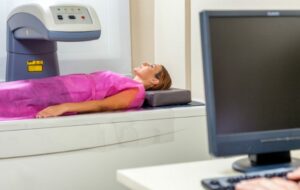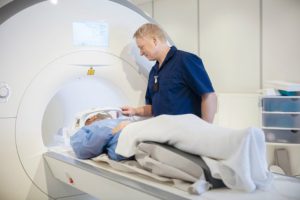Screening for Lung Cancer
In Australia, lung cancer accounts for nearly 1 out of every 5 cancer deaths. The 5th most common cancer, thousands of new cases appear every year.

Screening for Lung Cancer
In Australia, lung cancer accounts for nearly 1 out of every 5 cancer deaths. The 5th most common cancer, thousands of new cases appear every year. In 2011, statistics report over 8,100 deaths caused by lung cancer. The risk of a lung cancer is high, and most patients don’t receive a diagnosis until the disease has already progressed and symptoms have begun to appear. At this time, no routine screening test for lung cancer exists, but older patients who currently smoke or who have smoked for a significant number of years may benefit from a low dose CT scan.
How Does a Lung Cancer CT Scan Help?
Screening the lungs of a high-risk patient for early cancer symptoms is an opportunity for earlier identification of the disease. When discovered in the beginning stages, the possibility of curing and better treating lung cancer increases exponentially. Although Australia has yet to adopt an organised routine lung cancer screening, the American Lung Association in the United States recommends screening individuals from the ages of 55-80 and are former or current smokers, and who smoked an average of a pack a day for a period of 30 years. Long term smokers over 55 have the highest risk of developing lung cancer in their lifetime.
Results from America’s National Lung Screening Trial showed that low dose CT scans enabled radiologists and physicians to recognise symptoms of lung cancer more frequently, earlier, and with more accuracy than with traditional chest x-ray. This study also demonstrated a 20% reduction in mortality among lung cancer patients, attributed to the use of low dose CT scanning in early detection.
How Does it work?
A low dose CT can be an effective tool which not only detects early states of cancerous cells, but can scan for asbestosis (lung scarring), pleural plaque, and mesothelioma (pleural cancer). Painless and noninvasive, the lung cancer CT uses a low dose of radiation. CT’s create cross section images of the lungs, generating a 3-dimensional image that is effective at measuring the density of structures within the patient’s body. CT’s can be very useful for identifying growths or masses within the body. Tumors or nodules detected by such a scan may be benign (noncancerous) or malignant (cancerous). Further diagnosis may be required through biopsy or other screening resources.
Prevention is Key
Although screening for lung cancer through a low dose CT scan can be an effective resource for certain patients, there is still much research to be done. With lung cancer and the other risks associated with cigarette smoking, the best step towards treating this disease is to PREVENT it. Not smoking is the greatest factor in prevention of lung cancer. If possible, its also highly advisable to avoid situations where others are smoking, as secondhand smoke can also be damaging. If you’re a current smoker looking to quit, the following resources can help:
For further questions about lung screening CT scan or any other information regarding our services, please contact our team of caring, experienced radiologists here at Vision XRAY.
Read our articles and FAQs
We’re delighted to provide updates on the latest medical imaging technology and answer your most frequently asked questions about our services.









